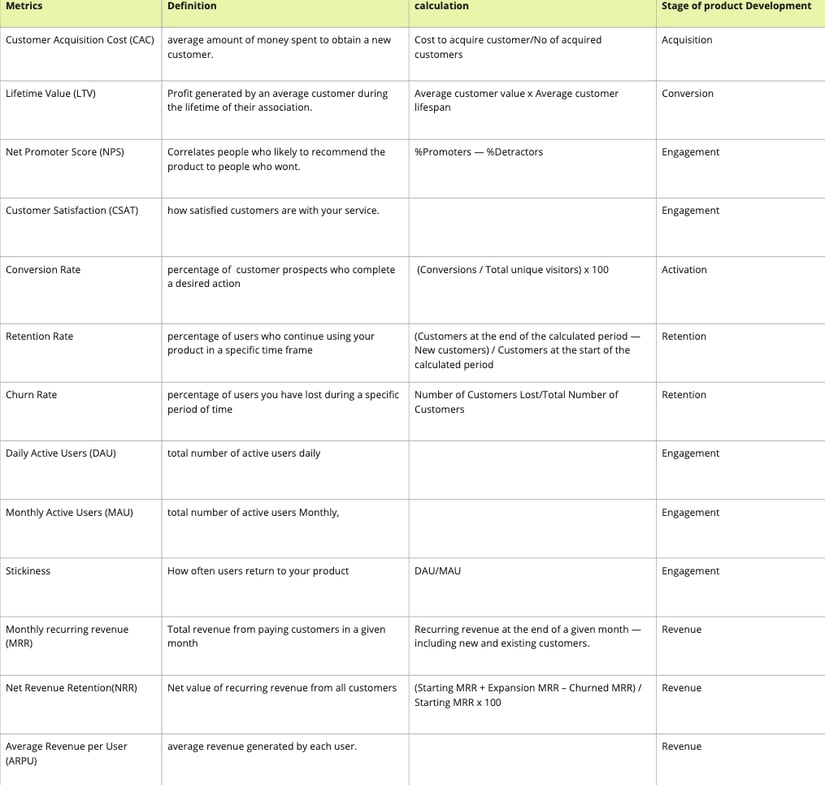A quick guide to most important Metrics for Business Growth
I have tried to explore the significance of product metrics, the key metrics to track, and how to interpret and apply these insights for continuous improvement.
Kumar Vivek
12/15/20232 min read
In today's dynamic business landscape, understanding and leveraging product metrics is essential for companies aiming to stay competitive and achieve sustainable growth. Product metrics provide valuable insights into the performance, user engagement, and overall health of a product, enabling businesses to make data-driven decisions. Through this article, I have tried to explore the significance of product metrics, the key metrics to track, and how to interpret and apply these insights for continuous improvement.
What are metrics?
Every action, reaction and competence that we perform with an "Intention" is consistently gauged by scores or evaluations. Be it number of likes on Instagram, performance bonus at work, a degree you accomplished, or price fluctuations of the house you bought; everything is accounted via some qualitiative or quantitative parameters. So, it seems obvious enough for businesses to define, monitor and iterate upon specific business processes that represent respective competency and, help drive innovation and revenue as a whole. These qualitative and quantitative parameters are called Metrics.
Why are metrics important?
Well, in a broader sense they provide comfort if you are doing good or stressed if you aren't. Let's take a classic example :
In the movie "The Internship," the team find themselves faced with a final assignment that challenges them to devise a strategy for significantly increasing the revenue of a struggling local business. The team went to a local pizzeria convinced them to branch out based on where they are as a business, unexplored target market and expansion strategy following key metrics.
Taking pointers from an article by Stephen lynch (link below), what exactly metrics achieve is to:
Define what we want and measure progress towards the goals set, allowing us to identify if we are improving and correct what is not working.
Define the priorities of the organization.
Give specific focuses and objectives to each member of the team.
So, Its very imperative that metrics are defined in meaningful way. Those metrics should give a clear picture of the situation you are trying to understand.
KPIs vs Metrics- Same but not Same
All KPIs are Metrics but all metrics are not KPIs
That being said, I would like to quickly establish the key difference between metrics and KPIs and some examples.
A KPI would tell you how are you doing in terms of progression in order to achieve an specific 'business objective'. Whereas metrics measure specific 'business processes'.
For further reading, I would suggest "KPIs vs Metrics: Understanding The Differences With Tips & Examples by Bernardita Calzon ". In the article she details upon key differences in a very informative way.
Let's dive into our core focus again - Metrics.
There are lot of metrics catagories - goal, quantitative, qualitative, vanity, actionable, leading, lagging, and so on. While metrics can vary based on your product, the following are few of the traditional metrics which you can leverage based on your business goal


Commonly Used Metrics


